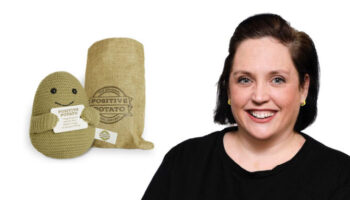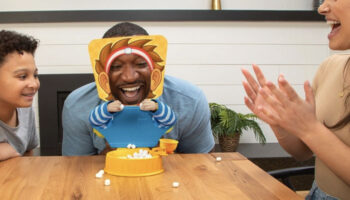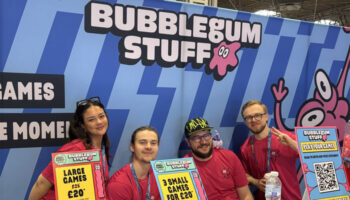SnapDragon’s Rachel Jones on helping inventors and toy firms fight the fakes

Brand protectors SnapDragon use cutting-edge technology – backed by its own brand protection experts – to monitor online marketplaces, find fakes and take them down.
We caught up with Rachel Jones, Founder and Head Dragon at SnapDragon, to find out more about the firm’s work in the toy space, and how it engages with the inventor community.
Hi Rachel. To kick us off, what led you to launch SnapDragon?
Well, it’s a long and sorry tale! What brought me into the space of fighting fakes was that I invented a baby product called Totseat 18 years ago. It did really well, sold in over 50 countries around the world and then, about 10 years into journey, a counterfeit was seized of this product – and the bottom fell out of my world.
I was absolutely horrified. I knew it would be copied and I’d worked hard in the early days with my IP in terms of registering my trademarks and design rights, but it hadn’t occurred to me that I would see a complete and total fake. It was totally the same – even my board couldn’t tell the difference when they saw the packaging.
We’ll put a snap in here so people can see the similarities.

They look the same at first glance, certainly online as my original images were used. But also – before you open the packet – they look like the same product.
They really do! Terrible! So what did you do it about it?
Well, the first I knew about it was someone called me to complain that they’d bought a Totseat and it had left a stain on her white leather chair. Apart from wondering why you’d put a baby in a white leather chair, I knew my product would never stain because …. We had used a fabric which never runs – and had years of use, and thousands of users, and the official tests to prove it.
Oddly enough, about two days later, we got a phone call from Customs. I’d registered for what is now called an AFA – Application for Action – where Customs Officials inspects product coming into the country and if they see something which looks fake they seize it and they ring you up and tell you. That’s what happened.
At that point we were importing half containers of thousands and thousands of units, and a box had come in with just 36 Totseats, all mixed colours, and Customs thought they were suspect compared with what was on file as being original. They sent the samples to me and that’s how I first discovered there were fakes out there.
What were your first thoughts?
I was horrified at the audacity that someone had decided to copy it, but it was also the safety issue and the fact that the fake was poorly made. I didn’t know where it had been made, how it had been made… Was it made by children? Are there stray needles in it? I’d worked really hard on safety. This product looked like mine, but wasn’t mine, and somebody could get hurt.
Within two days of fakes being found, I had employed two Chinese students from the University of Edinburgh Business School to help me look for fakes on the web. We found a whole bunch of fakes on the Alibaba platform in China. I wanted to tell Alibaba to take these fakes off the platform – it was incredibly difficult at that point. Back then, Alibaba was relatively new, and it was used to dealing efficiently with fake luxury products, but not those of SMEs.
In that case, how did you go about raising it with them?
I got on a plane with my fantastic colleague Jet Doran and we went to see Alibaba. We got an interview and, at that point, the IP department at Alibaba was very very small. It’s now a vast department because they have really had to take IP seriously to enable brands to trust the platform.
We explained the difficulties of being an SME – in terms of registered intellectual property rights, and budgets! We talked about having registered IP in our home territory, and others, but not in China and discussed using these rights to defend my product on the Alibaba platforms. Other people were pushing for this at the same time and so they did change their policy which was fantastic. Any brand can now use IP registered somewhere else to protect themselves on Alibaba and AliExpress. We were involved in that push and it’s been a gamechanger for brands around the world.
That was the beginning of learning what to do when you encounter fakes. We worked really hard to identify fakes online and used our design rights and our trademarks to get them offline. As a small business that’s all I could afford to do. Major brands have offline and online strategies, but when I was a small business, I simply didn’t have the money to take on a big legal firm to find and prosecute people that were selling the fakes. What I could do was identify them and take them offline to remove the visibility of the product- which in turn meant the fakes couldn’t be bought.
Has the issues for small businesses got better or worse since then?
There are so many more platforms now around the world and you get a new platform launch in, say, Indonesia on a Monday with one million beta users and by Friday they’ve got nine million beta users, so you need to take it seriously.
These platforms are popping up all over the place, and not all fakes come from China. People are often taken aback that there are fakes coming out of South America and Africa, where they often don’t have IP protection.
So, to answer your original question, it all came from first-hand experience and I absolutely know what it’s like to have fakes of your product out there. You feel violated. It takes an emotional toll as well as a financial one and a physical one.
I knew lots of people in the same situation as me, so I started working with them to identify fakes and that’s when we got permission from Totseat to start SnapDragon.
So how does SnapDragon work? How do you tackle fakes?
We specialise in online brand protection. Our tech trawls the online marketplaces, social media sites and websites to identify product that is infringing on your IP. Once found, we can remove the links, or the client can.
If you just want our software to scan sites for you, you’d get the results, and you can take the links down yourself. Or we can take those links down for you. It’s a great tool in terms of demonstrating where your IP is working and where you might think about registering some more.
And you cover toys, as well as other industries?
Yes, we started off in toys [and nursery] because that’s where we had friends and contacts and could empathise with what people were going through, but we now work across the board. Most of, but not all, are physical products – anything from homewares to fish food or a hair product!
We only fail if you have no IP which we can use to protect your brand. The saddest thing is when people have brilliant ideas, get excited about them, take them to market through crowdfunding, perhaps, but they have no IP. Counterfeiters are very wily and have manufacturing and supply at their fingertips, so sometimes crowdfunded products are ripped off quicker than they can actually get to market.
That said, 98% of all links that we report for removal stay down – and that’s a very high percentage.
Can inventors engage with your tech as well as toy companies?
Absolutely. We’re happy to help anybody. Sometimes, when you are the licensee, you are charged with doing the protection and sometimes it’s the licensor.
As an inventor, I’d always want to have my nose to the ground of what’s happening, particularly because so many big brands know how to work around design rights. My Totseat product was also ripped off by high street chains who worked around my design rights. If I didn’t have my nose to the ground, I wouldn’t have known about it. Inventors should keep an eye out for what’s happening with their concepts.
There’s lots of free advice out there and anyone can email me with questions, I’m always happy to help. My email is: [email protected].
How does the toy industry compare to other sectors when it comes to suffering from counterfeiters?
I’m afraid it suffers horribly. When they’re ripped off, especially consider the work that goes into inventing and designing toys, and crucially, taking them to market as safe products for children, it can’t help but make you so mad. Counterfeiters haven’t had to invent it, test it, insure it, market it… They just rip it off, so of course it’s going to be cheaper, but unsuspecting consumers think it’s a bargain and so they just buy it – especially when they often look so similar.
One of the things about any industry is that it’s very difficult to tell companies they have a problem with fakes if they don’t know it. It’s a tough message to deliver, but if companies don’t address it, it’s bad for everybody… It’s bad for your customers, it’s bad for your reputation and it’s bad for your revenue. You need to be honest if you have a problem and take the people in your distribution network into your confidence and tell them to look out for the fakes.
On that, where does the bulk of responsibility lie? Companies, inventors… Or should retailers be acting more responsibly on this front?
It’s three-pronged. The consumer must be buyer-beware. Sad as it is, consumers need to up their game when it comes to what they’re buying, and not be swayed by price. E-commerce retailers have got better, mostly, but platforms where people can set up their own shop and sell are still very difficult to police. For brands and inventors, you have to be vigilant – but you have to be vigilant with tools that you can actually do something with.
Rachel, this has been great. Thank you so much for making the time to chat!
—-
To stay in the loop with the latest news, interviews and features from the world of toy and game design, sign up to our weekly newsletter here





















